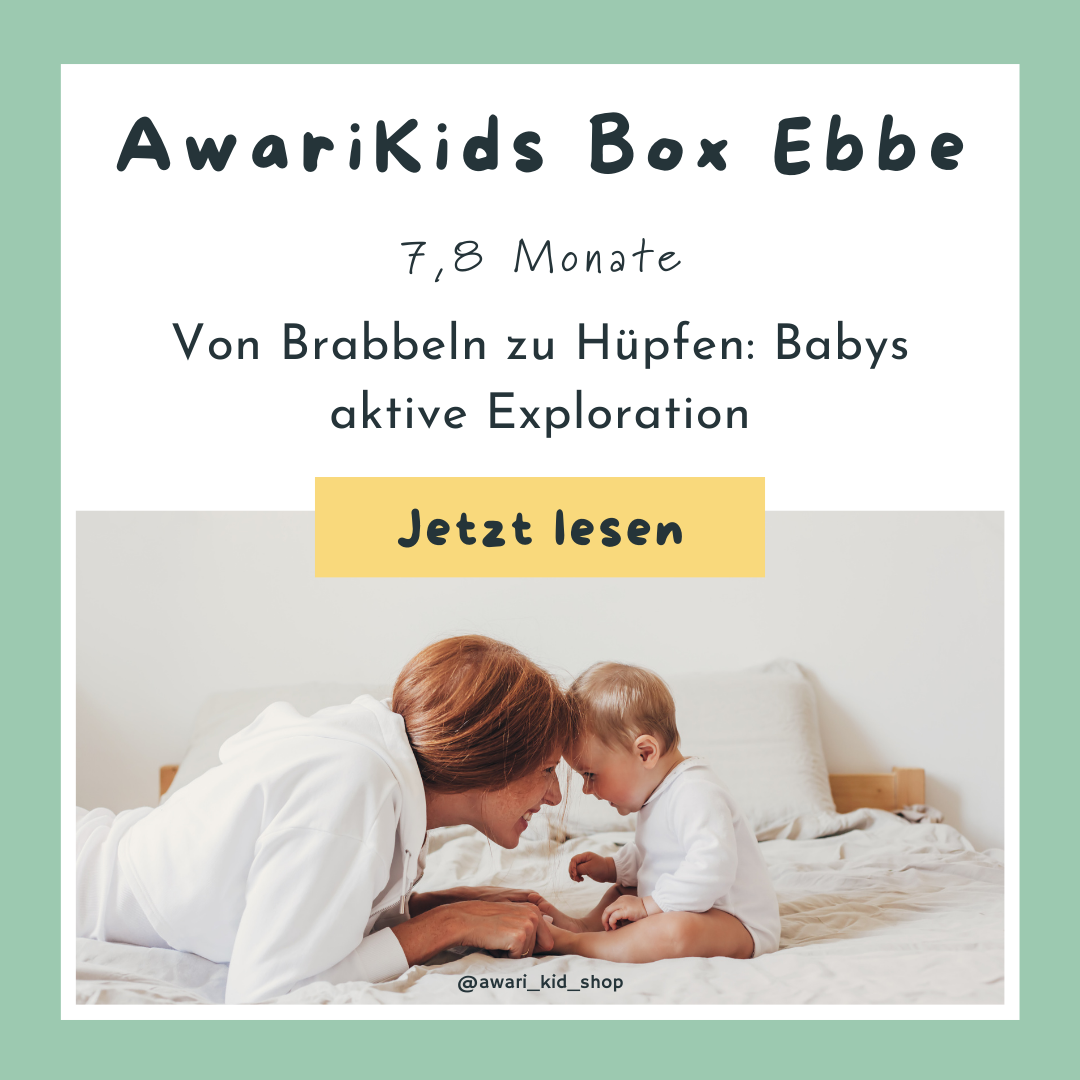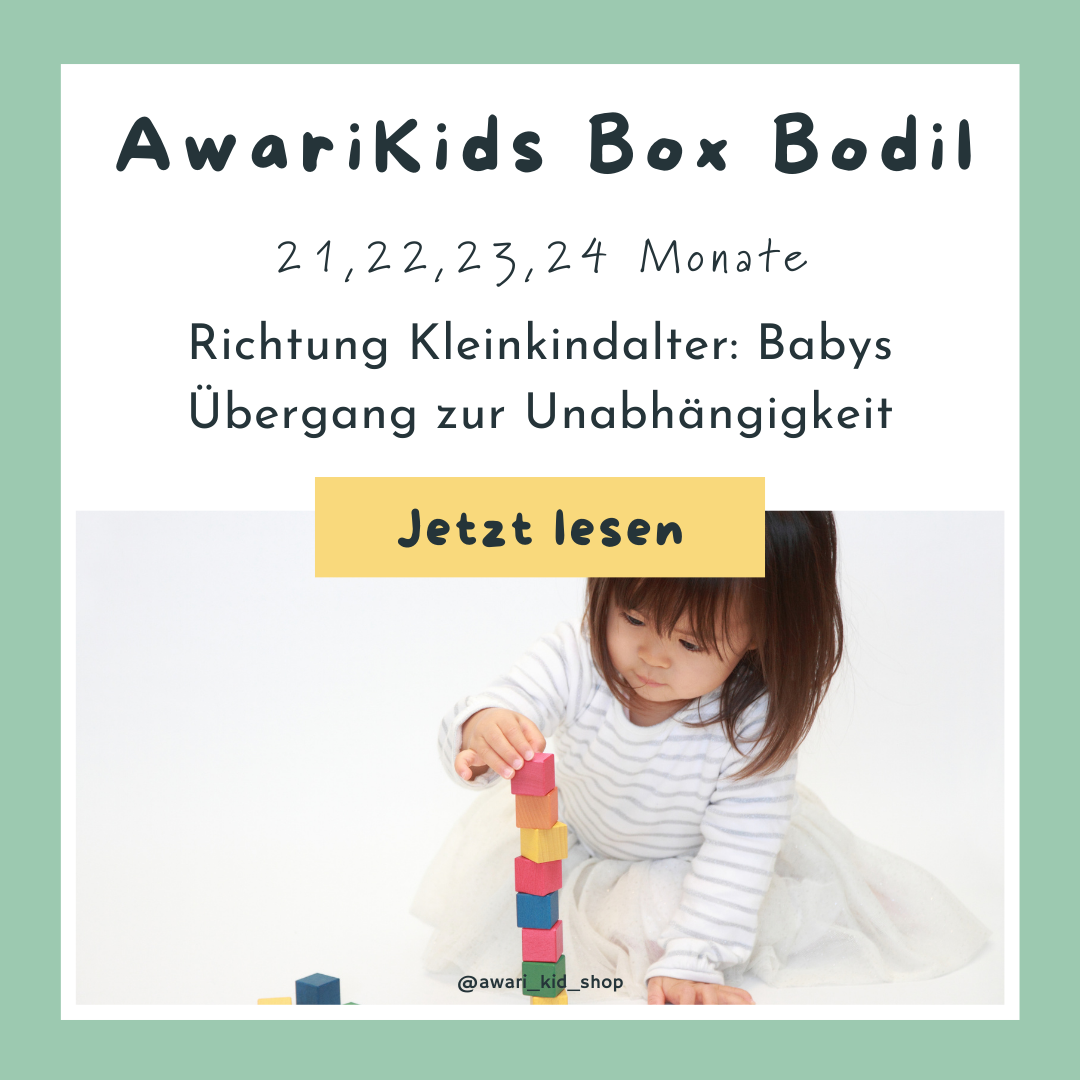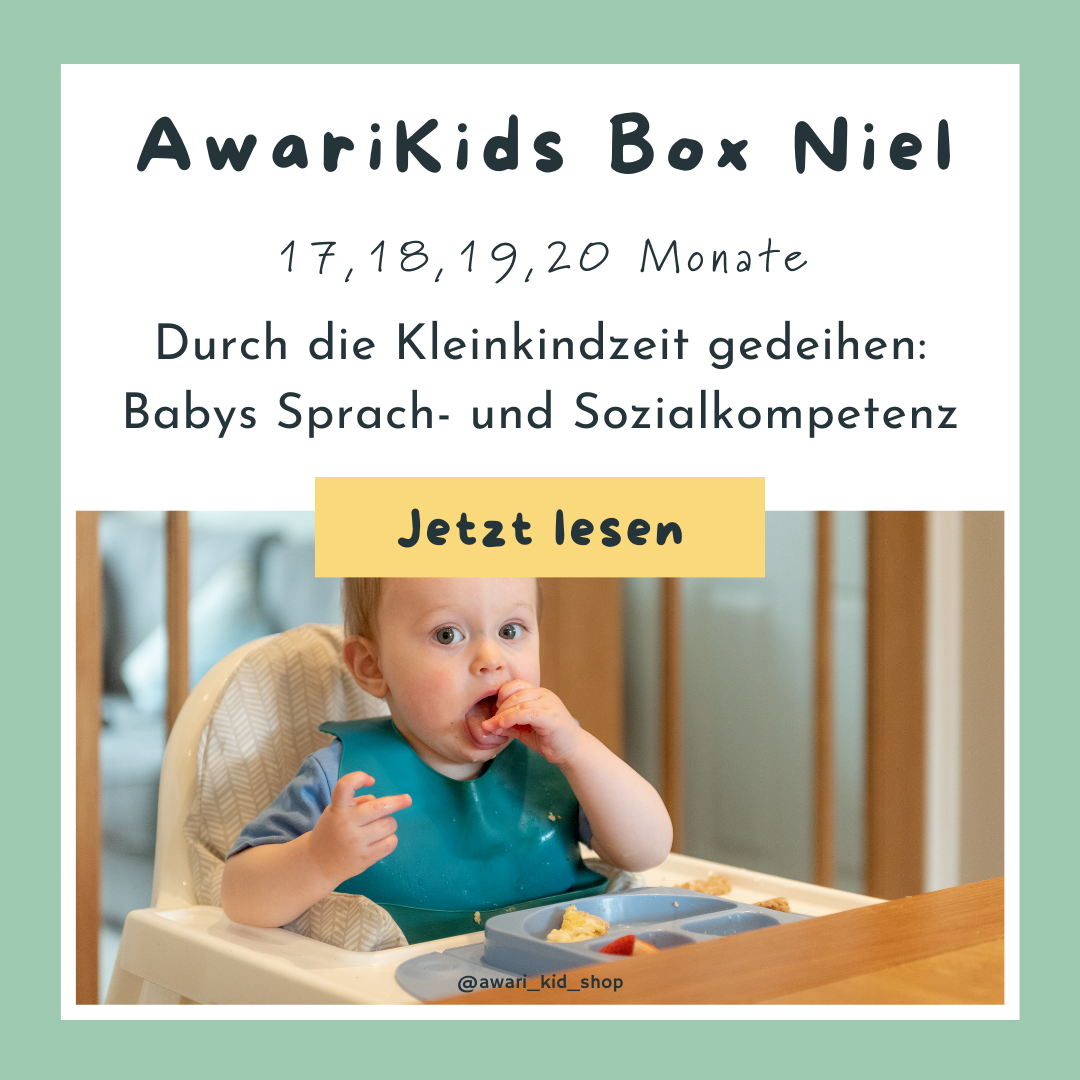Development at a glance
Your baby is full of curiosity about his environment, he is fascinated by what happens in his environment every day. At this age, babies go through a variety of exciting developments that further develop their skills and behavior. Here are some important milestones and developments typical for babies aged 7 to 8 months:
- Motor Skills: Your baby will continue to improve his motor skills during this time. He may now be able to sit without needing support and may begin to lean on his hands and knees or make early crawling movements.
- Grasping and Manipulation: Your baby will continue to develop their grasping and manipulation skills. He can specifically grasp objects, move them back and forth between his fingers and begin to examine and explore small objects.
- Communication: Babies of this age are becoming more and more active in their communication. They may be able to make sounds like "Mama" or "Dada" and try to imitate simple words or sounds. You will also begin to respond to simple instructions or questions.
- Social Interaction: Your baby will begin to be more interested in other people and their surroundings. He may show joy when he sees you, or respond to other people by smiling, laughing, or interacting with them.
- Exploration of the environment: Babies of this age become increasingly curious about their surroundings. They will begin to actively search for items that interest them and attempt to reach or explore them.
- Sleep Patterns: Your baby's sleep patterns may evolve. Some babies may sleep through longer periods, while others may continue to wake up more frequently.
It is important to note that each baby develops individually and reaches milestones at their own pace.
The AwariKids Box Ebbe

The Ebbe box supports your baby's natural curiosity. The box contains, among other things, a Montessori object permanence box, with which your baby can have its first experiences with object permanence, as well as a puzzle with an integrated mirror, which will certainly arouse your baby's curiosity. The Rainmaker will surely delight your child with its relaxing sounds. The products in the box have different materials that are also very exciting for your child, because your child now wants to discover, get to know and understand things.
- Trains auditory perception
- Promotes language development
- Conveys object permanence
- Satisfies the natural urge to explore
- Lays the foundation for the development of memory
Egg in cup

What?
An absolute classic among Montessori materials and is very popular with children. The egg and the cup are made 100% from sustainable and untreated wood.
How?
You can place the egg and the cup in your child's activity area and show him how to put the egg in the cup. Your child will follow you, but first they will most likely explore the materials very extensively. Since the wood is untreated, you can of course explore the material with your mouth without hesitation.
Why?
Precise insertion not only promotes fine motor skills and the muscles in your child's hand and arm. In addition, endurance and concentration are also promoted. The feeling of achievement when your child manages to put the egg in the cup for the first time is of course very important for your child and should be celebrated with great recognition ;)
The Rainmaker

What?
Who doesn't know him - the rainmaker, he is not a very fascinating toy for children, but at the same time he also has a very relaxing effect on both children and adults.
How?
Show your child how the rainmaker works by gently moving it back and forth. Your child will enjoy the pleasant sounds as well as the visual appeal of the rainmaker will fascinate your child. You can then roll it back and forth in front of your child and then give your child the opportunity to do this independently.
Why?
The rainmaker stimulates your child's stimuli, both sensorimotor and auditory perception are trained. Of course, fine motor skills and the sense of grasp are also promoted here. In addition, your child's self-efficacy will be promoted; they will quickly understand what happens when they move the rainmaker back and forth.
Object-permanence box

What?
The Montessori material is bad for children of this age. The Object-Permanenz-Bos is made from 100% sustainable wood.
How?
Show your child how to insert the wooden ball into the box. Repeat this process a few times and your child will be fascinated by it. If you feel like your child would like to take action themselves, give them the wooden ball. Don't forget that your child will be very happy when he throws the wooden ball into the hole for the first time, give him due recognition ;)
Why?
Object permanence means that your child has the ability to understand that objects continue to exist even though your child cannot see them at the moment. However, they can still be heard or touched. This knowledge plays a very important role in your child's cognitive development.
Mirror puzzle

What?
The first puzzle for your baby <3 and the special thing about it is that it has a mirror under the puzzle piece. Babies of this age love mirrors and can take a long look at themselves in them. The puzzle is made from sustainable wood.
How?
Place the puzzle in your child's activity area and show him how to lift the puzzle piece and then put it back in. Show him the mirror inside. Your child will initially grasp the puzzle piece with their whole hand, but as your child gets older, they will also hold the piece by the handle. This is already preparation for writing or holding a pen (the so-called three-point grip), but it will still take a while until your child is ready for it ;)
Why?
Puzzles are essential for children's cognitive development, which is why they are available for all ages and with different levels of difficulty. The jigsaw puzzle promotes your child's ability to concentrate and endurance, as well as fine motor skills and eye-hand coordination through the targeted grasping and insertion of the puzzle piece.
The stacking tower

What?
The stacking tower is made of an innovative material, food grade silicone. Because of that The individual parts are very easy to clean (in boiling water or in the dishwasher).
How?
The stacking tower itself is very self-explanatory, but the great thing about this model is that your child can not only use it for stacking, but can also use it to play with water, use it as a mold in the sandpit, or do pouring exercises with it. The special thing about this stacking tower is that it can be stacked on top of each other, inside each other and next to each other. In addition, the very pleasant feel will invite your child to play with it extensively. Later they can also be used as a sorting game or as a container for small items.
Why?
The classic stacking tower is an educationally valuable toy because it offers numerous play options, which offers your child many experiences of success that are important for the development of self-confidence and self-efficacy. Thanks to the food grade silicone, the molds can be used anywhere without hesitation. The different play options encourage your child in different areas. Fine motor skills and eye-hand coordination are promoted, and a feeling for different sizes is also encouraged. Playing with the stacking tower also stimulates your child's combination skills and sense of statics.
The felt balls

What?
The three felt balls made from organic cotton are a standard part of every child's room ;)
How?
The felt balls in beautiful, bright colors are versatile. And your child will find their own way to play with them. At the beginning you can roll the balls back and forth in your child's field of vision and later give them directly into your child's hand.
Why?
Throwing objects is part of children's development and play (which is also another experience of cause and effect), which is exactly what the felt balls are ideal for. Gripping the individual balls will strengthen your child's hand muscles and will also promote fine and gross motor skills. If your child can move around and follow the balls, this will satisfy their urge to explore.

Your child develops rapidly in early childhood, and there are so many developmental steps and tasks to be done, especially in the first year. It is sometimes tempting to compare children, but it is important to us to mention here that every child develops individually and every development is a unique journey.


We wish you a great time and lots of fun with our products!
If you have any questions or comments, please feel free to contact us at any time.
Here's a little insight into the next box:




